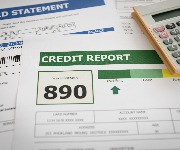Opinion: social costs and VAT energy bill contradictions make our energy strategy a mess

Taxing us 10 times more for using electricity is a funny way to go about encouraging us to move away from gas.
It’s been another rough week for the energy market.
For the second time in the last year, my energy supplier has gone bust, this time Green Supplier Limited hitting the wall.
I’m beginning to think it might be me…
However, the current (hopefully) short-term difficulties shouldn’t distract from the fact that there are some bizarre contradictions behind the overall energy strategy, as the Government talks a good game about encouraging people to go green and yet seemingly does the opposite.
Energy taxes are a farce
This week George Bull, senior partner at tax experts RSM, highlighted the frankly perverse set up when it comes to the way that tax is applied to our energy bills.
As things stand, there are a couple of different taxes that feature in our energy bills.
The first is in the form of social and environmental obligation costs, the money that energy suppliers have to contribute to help pay for the Government’s social energy policies.
This covers things like helping vulnerable people, encouraging the take-up of renewable technology, and the schemes that deliver energy-efficient improvements to homes and businesses.
Bull calculated that for a typical dual-fuel bill in 2020 of £1,184, the social and environmental costs came to £181, around 15.33% of the bill.
However, separating out gas and electricity bills uncovers an enormous difference. For gas bills, the social costs come to 2.46% of the total bill, yet with electricity, it amounts to 25.48% of the bill.
This is clearly a ridiculous setup.
The idea from the Government is that we need to move away from gas heating towards more electricity-based systems, as we can employ renewable sources to generate that electricity.
Yet the tax system sends the opposite message, actively punishing those households who have already got a setup in place that runs mainly on electricity. As Bull points out: “Surely these figures should be reversed?”
Giving an incentive
Another aspect of the tax system that applies to our energy bills is of course VAT.
As Bull highlights, both the gas and electricity portion of energy bills attracts VAT at a rate of 4.76%.
While VAT is always a politically sensitive topic, it can be used to encourage particular behaviours. We already have a host of items that are either VAT exempt or zero-rated, like children’s clothes, books and newspapers, and certain foods.
If the Government really wants to encourage us to make the switch away from gas towards more renewable energy sources, then surely it would make sense to tweak the VAT rates we pay?
Offering a tax incentive can be incredibly effective at getting people to do something ‒ we only have to look at the bonkers nature of the housing market over the last year, courtesy of the Stamp Duty holiday, for a perfect example of that.
It doesn’t even have to mean that electricity becomes zero rated, but some form of cut would make sense if the authorities really do want to encourage us to change our energy ways.
I want to make a difference
I do believe that many of us want to be a bit more environmentally friendly in our energy use. The last few years have seen a sharp increase in the numbers of households switching to energy tariffs that are marketed as being green.
Unfortunately, there are big question marks over how green those tariffs really are, with suppliers accused of ‘greenwashing’, but it doesn’t change the fact that plenty of us have good intentions here.
But if we are to make changes, then we need a helping hand from those in charge, not only to encourage that behaviour but to make it financially accessible.
It’s one thing to say that more of us need to switch to heat pump systems for example, but so long as they remain prohibitively expensive it’s not going to be a realistic option for millions.
Similarly, banning the sale of new petrol and diesel motors from 2030 is all well and good, but we need to have the infrastructure in place to support motorists moving to electric vehicles.
And as we’ve highlighted before, it’s a real mixed bag across the nation when it comes to installing charging points for those homes which don’t have access to their own dedicated driveway.
If the strategy is in fact to get more people to embrace renewable energy sources and use more green energy, then there needs to be far more joined-up thinking from the Government to make that a reality.
Most Recent
Comments
Be the first to comment
Do you want to comment on this article? You need to be signed in for this feature








